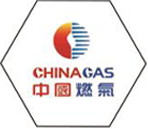
Sep . 09, 2024 11:49
Back to list
gas pressure regulator valve
Understanding Gas Pressure Regulator Valves
Gas pressure regulator valves are crucial components in various industrial and residential applications where gas is used as a fuel or raw material. These valves are designed to control the pressure of gas flowing through a system, ensuring that it remains within safe and efficient operating limits. This article explores the functionality, importance, and applications of gas pressure regulator valves.
At the core of a gas pressure regulator valve is its ability to maintain a consistent output pressure despite fluctuations in the input pressure or changes in gas demand. When gas is delivered from a storage tank or pipeline, it can arrive at varying pressures due to a number of factors, including temperature changes or volume fluctuations. If left uncontrolled, these variations can lead to unsafe operating conditions, equipment damage, or inefficient combustion processes.
The design of a gas pressure regulator valve typically includes a diaphragm, spring mechanism, and an adjustable set point. When gas enters the valve, it exerts pressure on the diaphragm. If the pressure exceeds the set point, the diaphragm moves to limit the gas flow to the downstream system. Conversely, if the pressure drops below the set point, the spring mechanism allows more gas to flow, raising the pressure back to the desired level. This automatic response helps maintain a steady flow of gas and guarantees safe operation.
gas pressure regulator valve

The significance of gas pressure regulator valves extends beyond safety. They also contribute to the efficiency of gas utilization. For instance, in industrial processes, the precise control of gas pressure can enhance the performance of combustion systems, leading to lower fuel consumption and reduced emissions. In residential applications, these valves ensure that appliances such as gas heaters and stoves operate effectively, providing comfort and reliability to homeowners.
These regulators come in various designs tailored to specific applications, including single-stage and two-stage regulators. Single-stage regulators are commonly used for low-pressure systems, while two-stage regulators are designed for applications that require higher precision and stability across a wider range of pressures.
In conclusion, gas pressure regulator valves play a vital role in controlling gas delivery systems, enhancing safety, efficiency, and performance in both industrial and residential settings. Understanding their operation and importance is essential for anyone involved in gas management, ensuring optimal results and safe practices in gas application. As industries continue to evolve, the technology behind gas pressure regulation will also advance, further improving the safety and efficiency of gas systems.
Latest news
-
Safety Valve Spring-Loaded Design Overpressure ProtectionNewsJul.25,2025
-
Precision Voltage Regulator AC5 Accuracy Grade PerformanceNewsJul.25,2025
-
Natural Gas Pressure Regulating Skid Industrial Pipeline ApplicationsNewsJul.25,2025
-
Natural Gas Filter Stainless Steel Mesh Element DesignNewsJul.25,2025
-
Gas Pressure Regulator Valve Direct-Acting Spring-Loaded DesignNewsJul.25,2025
-
Decompression Equipment Multi-Stage Heat Exchange System DesignNewsJul.25,2025

